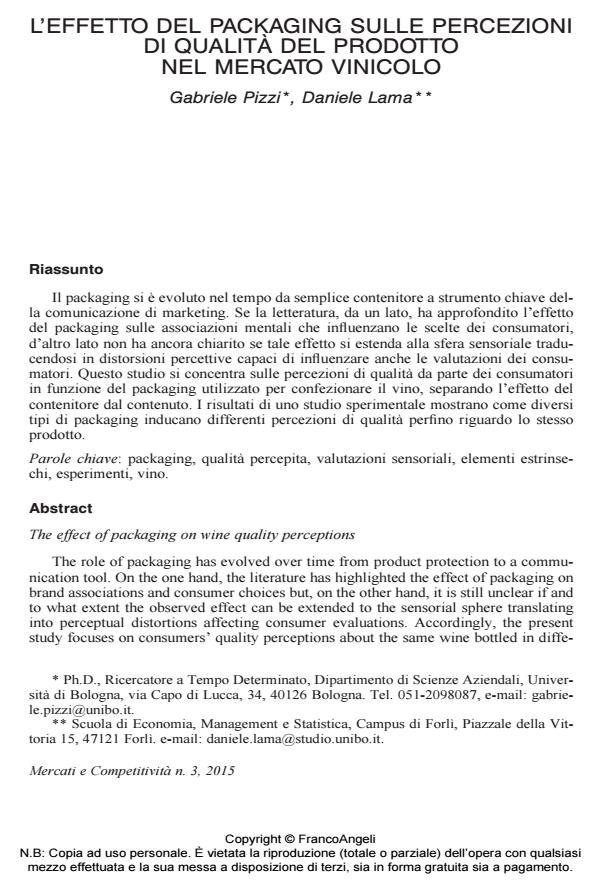The effect of packaging on wine quality perceptions
Journal title MERCATI E COMPETITIVITÀ
Author/s Gabriele Pizzi, Daniele Lama
Publishing Year 2015 Issue 2015/3
Language Italian Pages 22 P. 61-82 File size 510 KB
DOI 10.3280/MC2015-003004
DOI is like a bar code for intellectual property: to have more infomation
click here
Below, you can see the article first page
If you want to buy this article in PDF format, you can do it, following the instructions to buy download credits

FrancoAngeli is member of Publishers International Linking Association, Inc (PILA), a not-for-profit association which run the CrossRef service enabling links to and from online scholarly content.
The role of packaging has evolved over time from product protection to a communication tool. On the one hand, the literature has highlighted the effect of packaging on brand associations and consumer choices but, on the other hand, it is still unclear if and to what extent the observed effect can be extended to the sensorial sphere translating into perceptual distortions affecting consumer evaluations. Accordingly, the present study focuses on consumers’ quality perceptions about the same wine bottled in diffe rent packages in order to empirical isolate the effect of packaging from the packaged product. With these regards, the results of an experiment clearly show that different types of packaging induce different quality perceptions even about the same product.
Keywords: Packaging, perceived quality, sensory evaluations, extrinsic cues, experiments, wine.
Gabriele Pizzi, Daniele Lama, L’effetto del packaging sulle percezioni di qualità del prodotto nel mercato vinicolo in "MERCATI E COMPETITIVITÀ" 3/2015, pp 61-82, DOI: 10.3280/MC2015-003004